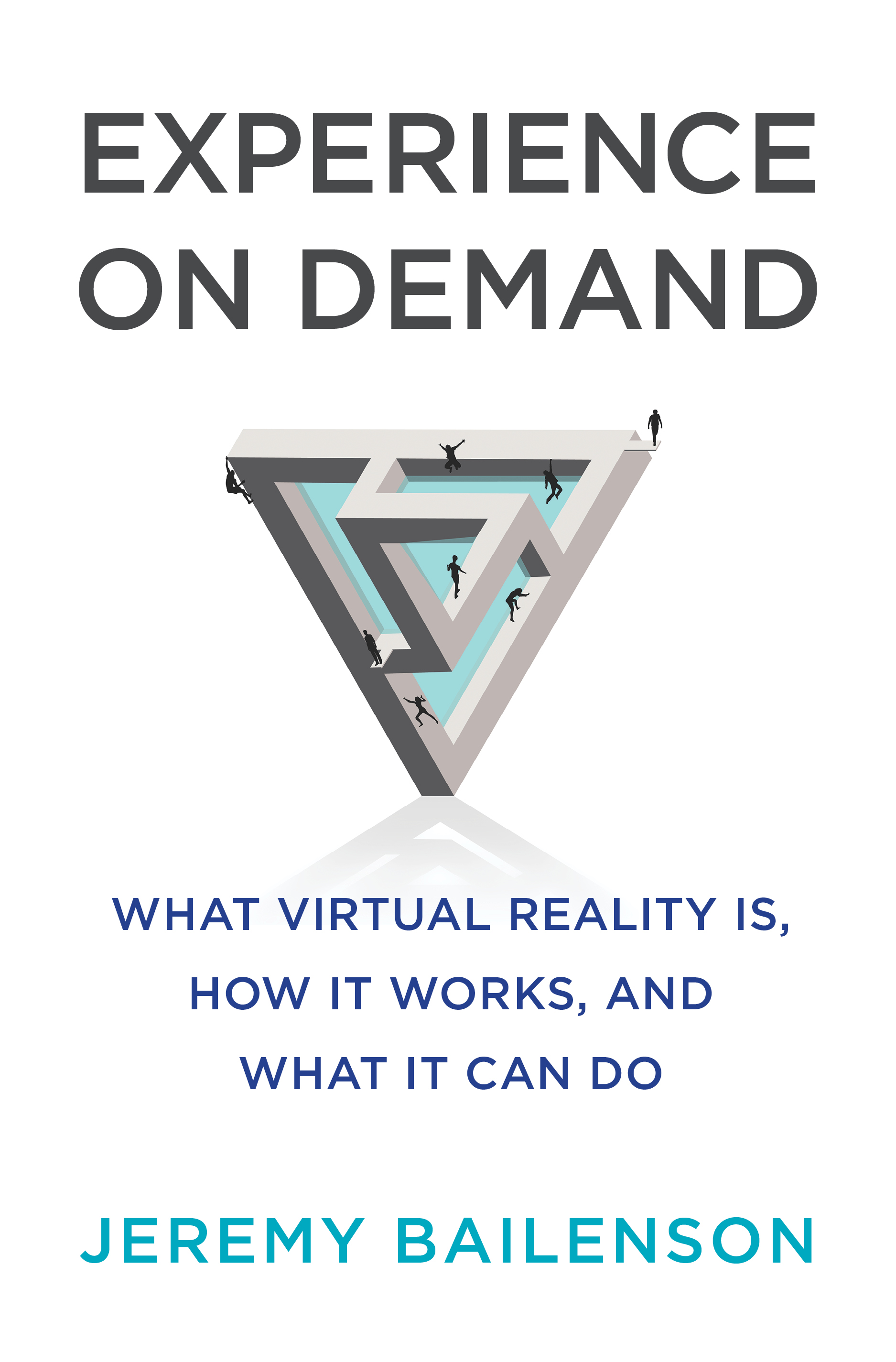You have /5 articles left.
Sign up for a free account or log in.
Few people have a more intimate relationship with virtual reality than Jeremy Bailenson, professor of communication at Stanford University and founding director of the institution's Virtual Human Interaction Lab. His new book, Experience on Demand: What Virtual Reality Is, How It Works and What It Can Do (W. W. Norton & Company, 2018), synthesizes two decades of developing and observing VR tools into an exploration of the technology's potential benefits and drawbacks.
The book opens with Facebook founder Mark Zuckerberg (who's been in the news just a bit lately) taking his first steps while wearing virtual reality goggles. He starts out feeling distance between himself and his artificial surroundings, but by the end, he's convinced. His journey mirrors most first brushes with the increasingly sophisticated technology. It also points to a possible arc for VR adoption in higher education -- caution and skepticism followed by a tentative embrace.
“Inside Digital Learning” asked Bailenson to expand on his musings about the educational possibilities of virtual reality -- and the challenges it will face as it becomes more ubiquitous.
Q: You wrote in your book that you think virtual reality has a long way to go before it’s an integral part of the classroom. What challenges have to be worked out before we arrive at that point?
A: Even in the short eight months or so since I turned in the final copy of the book, the economics of VR have shifted. Most companies are selling or working on "standalone" systems that don't require external cameras to track movement, which makes VR setup easier. VR companies have slashed the prices of the goggles, and the computers that run VR have become more plentiful thanks to advances in video cards.
At this point, for education, the barrier is not hardware but content. In Chapter 9 of the book, "Reverse Field Trips," I point out that a lot of the content in VR increases motivation to learn, but the data on learning efficacy and transfer in regards to STEM is mixed when one compares using the goggles to using a normal computer display. Simply put, most learning content works just fine on a 2-D screen. I believe this is a failure of developers, who have not yet made curricula for VR, as opposed to the medium itself.
Q: One possibility for data collection in virtual reality is tracking gestures to indicate specific types of learning and comprehension. How agreeable will students and educators be to such intimate details being used to inform academic experiences?
A: I have very little doubt that tracking data from VR systems -- how students move their heads, hands and bodies during learning -- can be used to predict retention of course materials, and likely learning transfer when that material from class gets applied to the world. Indeed my lab has provided preliminary data showing this capability. However, the privacy and policy implications of this are clearly vast, and there need to be tough conversations before a system that can categorize learners based on their body movements is implemented.
Imagine that, after 10 hours of body tracking, machine learning algorithms could predict with high accuracy what your final grade of the class would be, based on thousands of students who came before you who had contributed training data based on both body language during instruction as input and final grade as output. Would you, as a student, want to know that result after the first month of class? Would you want your professor to know? As far as I know, and I talk to policy makers about VR fairly often, there aren't many conversations ongoing.
Q: In general, what will the process of securing faculty buy-in be like when virtual reality becomes more mainstream? What concepts or ideas have convinced higher ed skeptics in your experience?
A: I am pushing for using VR as "field trips," experiences that last five to 10 minutes and give students special experiences they haven't had otherwise. I have had very little resistance to this suggestion, other than finding great content that actually augments current course curriculum. Professors tend to be thrilled when they can have a VR experience that bolsters their existing course materials: visiting Palau to learn about climate change and coral reefs; learning about ocean acidification by doing a species count; learning viscerally about how situational factors can cause homelessness. The idea is not to replace actual field trips, but to have them once a week, or even once per day, instead of a few times per year.
 Q: What role should virtual reality play in the classroom? Are there particular disciplines for which virtual reality is well suited or ill suited?
Q: What role should virtual reality play in the classroom? Are there particular disciplines for which virtual reality is well suited or ill suited?
A: VR is great at creating experiences -- ones that are interactive and that the brain responds to in a similar manner to actual experiences. It is a home run for any learning content that is procedural and active -- for example, learning dance moves or visiting the bottom of the sea to do a species count. For abstract learning, teachers will need to determine the best way VR can augment what they already do in the classroom.
It will take more elaborate programming and narrative development to make calculus experiential, compared to visiting a place in the ocean or walking around a VR statue of David.
Q: What’s the timeline for the incorporation of VR into classrooms more widely? It’s popping up here and there at universities across the U.S., but it seems like there are still quite a few barriers to broader adoption.
A: The pace is actually moving along at just the right pace. There has been a vast increase in the use of VR compared to five years ago. And I think it is just fine to move slowly, and to let teachers and students adjust to the new technology as they develop best practices. Google Expeditions has reached many thousands of students. Other platforms are increasing in frequency as well.
Q: How do you see debates over the ethics of VR playing out, specifically related to desensitization and information collection?
A: I just hosted a large conference at Stanford which was keynoted by a former FCC chairman and a CEO of one of the largest companies in the VR space. The chairman indicated that the FCC wouldn't regulate content given it was not over public airwaves, and the CEO committed to protecting information collection but not to regulating based on desensitization concerns.
Q: What’s the biggest misconception about VR, from your perspective?
A: That it is best suited for entertainment. People should consider VR more similar to an actual experience, as opposed to a media experience.
Q: And what’s something that’s currently true about VR that won’t be true in a decade?
A: In a decade we won't need goggles. All the content will be projected via light field display, and the bulky equipment will be gone.
Q: How has the conversation about VR in higher ed shifted in recent years? What areas of research into its effectiveness as a classroom tool remain unexplored?
A: Pretty much every question regarding how immersive VR will increase learning in the classroom remains unexplored; it is an exciting time to be a social scientist and to begin to answer these critical questions. Any progress on how VR will fit, culturally, into our lives will have to be made via grassroots activism. In my opinion, the forward thinking and the necessary, tough conversations about what we should not do in VR will not happen within the corporations or government.








